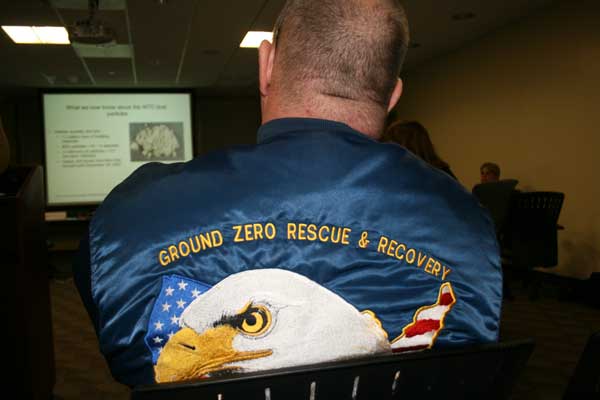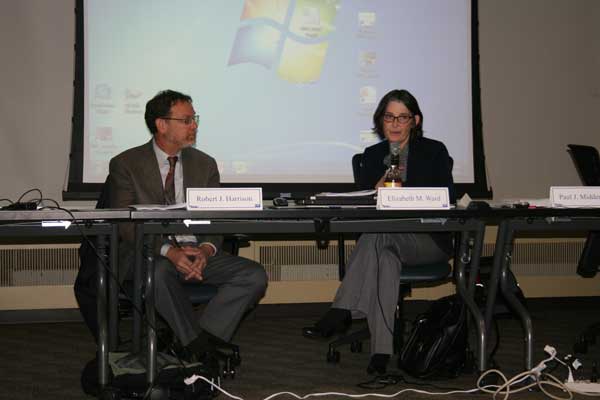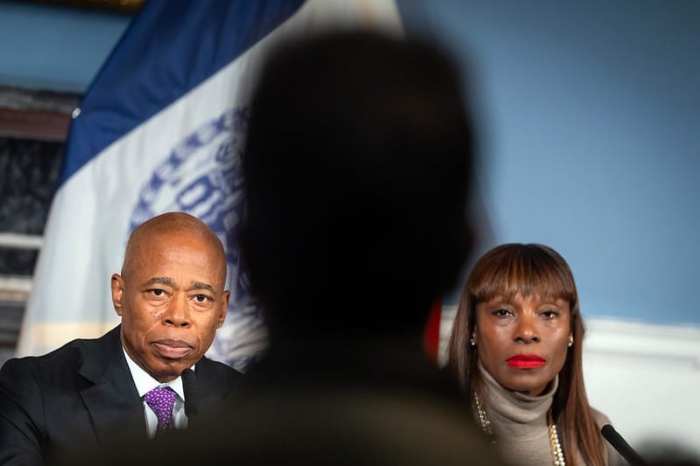BY ALINE REYNOLDS | Former Verizon worker Richard Dambakly toiled atop the pile at Ground Zero 12-to-16 hours a day for six months straight following the 9/11 attacks. The following year, he was diagnosed with non-Hodgkin’s lymphoma and underwent five months of intensive chemotherapy that sent his cancer into remission.
Dambakly, now 50 and the father of five children under the age of 15, lives with the constant fear that his disease will reemerge, but he can’t afford the CT (computed tomography) scan that would alert his doctors to an enlargement of his lymph nodes.
“I have no medical insurance,” Dambakly said in a testimony delivered last week before the World Trade Center Health Program’s Scientific Technical Advisory Committee (S.T.A.C.). “How do you think that makes me feel? Should I become a beggar and maybe raise the money for a CT scan?”
For the first time, federally-funded treatment might become available to Dambakly and scores of other cancer-stricken 9/11 workers and area residents thanks to a recommendation the government-appointed S.T.A.C. will be making to the National Institute for Occupational Safety and Health (N.I.O.S.H.) in April.
Though scientists have yet to establish a definitive link between first responders’ cancer and Ground Zero toxins, the S.T.A.C., sufficiently persuaded by gripping testimonies and available data, unanimously agreed that lung, blood and other select forms of cancer should be added to the James L. Zadroga 9/11 Health and Compensation Act. The committee also concurred that certain pediatric cancers as well as rare cancers such as mesothelioma should be considered for inclusion under the bill.
The decision was the result of a two-day conference held on Wednesday, Feb. 15 and Thursday, Feb. 16 at the Jacob K. Javits Federal Building in Lower Manhattan, where panelists listened to hours of scientific testimony and first-hand accounts from 9/11 first responders with cancer.
“The public really made a compelling argument for why it’s important in their view for us to act on it, even though we don’t have all the evidence we’d like to have to make a scientific determination,” said S.T.A.C. Chair Elizabeth Ward.
After receiving the S.T.A.C.’s written recommendation, N.I.O.S.H. Director John Howard, the bill’s health program administrator, will have until June to decide whether to add the cancers to the Zadroga bill. The illnesses would be the first to be included in the law since its passage in late 2010, and would take at least several months to be implemented, according to a spokesperson for N.I.O.S.H.
Community Board 1 Vice Chairperson Catherine McVay Hughes, who serves on the S.T.A.C., said the presented material convinced her of a correlation between Ground Zero carcinogens and the development of blood cancers, particularly lymphoma, and lung cancer.
“The panel was right to finally conclude that cancer could be an outcome of W.T.C. exposure,” said Hughes. “This is a very important step in the right direction.”
Making the call about exactly which cancers the S.T.A.C. should recommend adding to the bill wasn’t so obvious, Ward said. Scientists are still grappling with the causes of certain forms of the disease, and assessing peoples’ degrees of exposure to Ground Zero toxins is all the more difficult when key exposure samplings – particularly from the first week after the Sept. 11 attacks – are missing.
“We’re trying very hard to look at the available data and draw conclusions about what people were exposed to and how much they were exposed,” said Ward, “[but] we’re really lacking a lot of the data that we’d like to have about that.”
These gaps in evidence, however, didn’t deter panelists such as Stephen Cassidy, president of the Uniform Firefighters Association of Greater New York, from forming an opinion about the data that was presented. According to S.T.A.C. member John Dement, a professor at Duke University’s School of Medicine, exposure to asbestos, a mineral used to insulate some floors of the former World Trade Center, is associated with a heightened risk of cancer of the lung, larynx and ovary. It is also tied to mesothelioma, an uncommon form of cancer that occurs in the layer of cells that line the body’s internal organs.
The theory of a link between Ground Zero carcinogens and cancer was further substantiated by an alarming statistic cited in a forthcoming study by the Mount Sinai School of Medicine. According to Dean Philip Landrigan, who chairs the hospital’s preventive medicine department, there is an approximate 14 percent higher-than-normal cancer rate among its 20,000 9/11 recovery worker patients and a “statistically significant” excess of thyroid, prostate and blood cancer. Oddly enough, lung cancer, one of the most common types of the disease, wasn’t prevalant in the group.
“You clearly don’t have the kind of epidemiological proof that you’d like to have to declare with 95 percent certainty that there’s a cause-effect relationship [between cancer and 9/11 exposure], but you have to bear in mind that in legal cases, you don’t have to get to 95 percent, you have to get to 51 percent,” said Landrigan. “I’d ask you as members of this committee to weigh that as you make this decision.”
“When you want to start breaking down the studies and add them all together, you have a toxic stew [of chemicals],” said Cassidy. “It bears out clearly that those who were there and spent extensive times there have a more likely chance of coming down with these cancers.”
That’s not always the case, according to Ward, who noted that even small doses of asbestos and other toxins can cause cancer, which further complicated the committee’s decision of which cancers to attribute to 9/11.
“Even though most commonly cancer occurs with people of high, long-term exposures,” Ward explained, “there can be an increased risk with someone of these substances at lower exposures.”
The committee has until Monday, April 2 to submit its recommendation to Howard. The original deadline was Friday, March 2, but Howard agreed last week to grant the committee a 30-day extension. Howard will then have 60 days to decide whether or not to endorse the committee’s recommendation and modify the bill accordingly. It is unclear exactly how long it might be until 9/11 cancer patients would start treatment at the government-funded W.T.C. Centers of Excellence.
Responding to the outcome of the S.T.A.C. conference, Howard said in a statement, “We realize how personal the issue of cancer is to 9/11 responders and survivors and their loved ones and will give the advisory committee’s recommendation serious review and thoughtful consideration prior to making a final decision.”





































